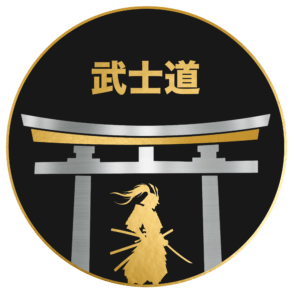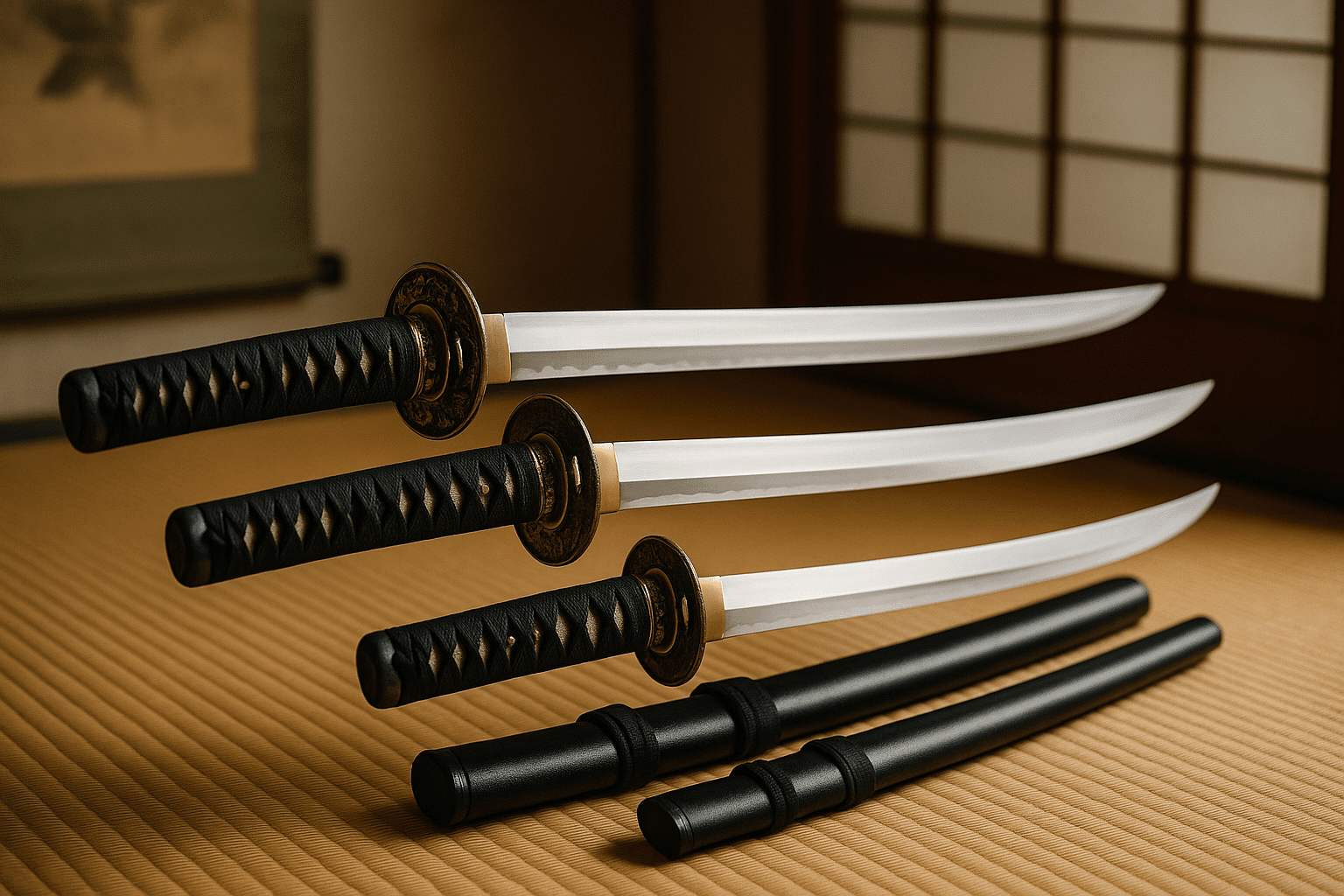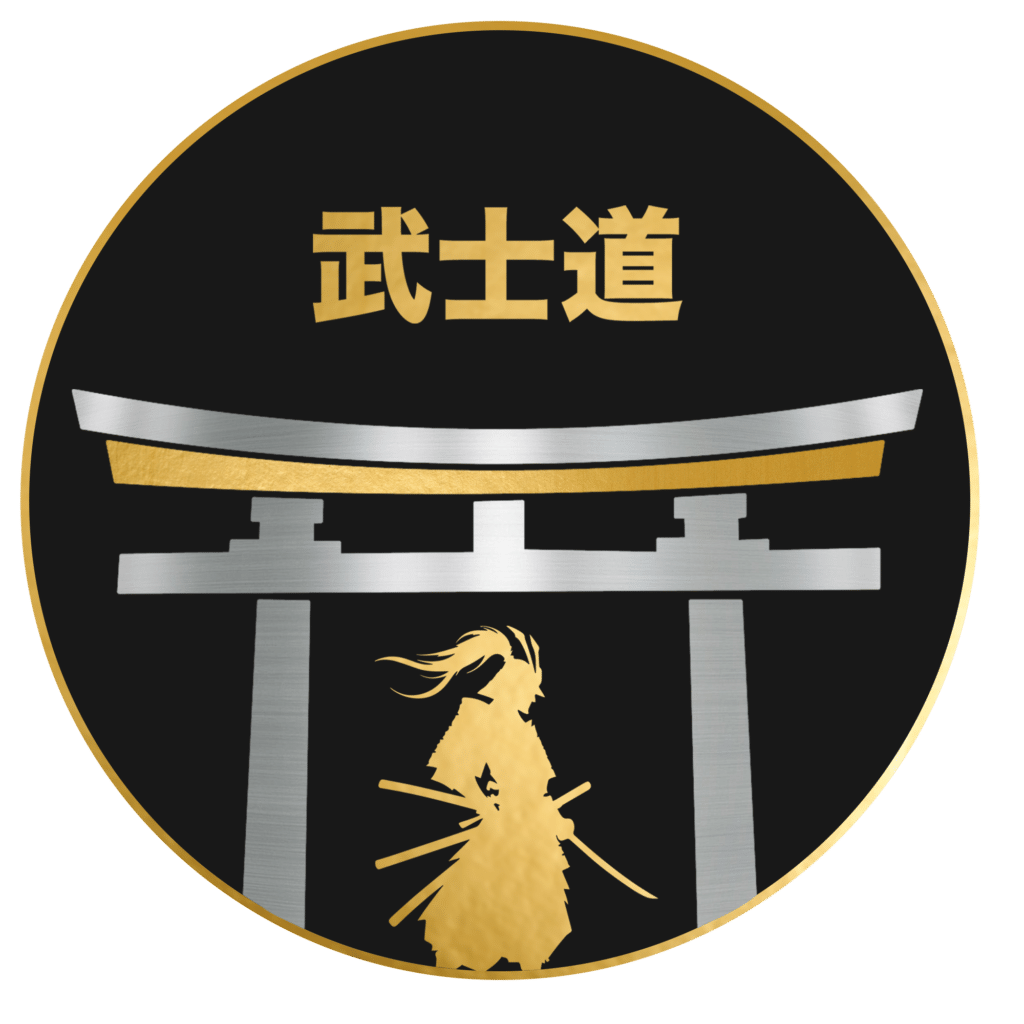Introduction: Blade Choice as a Reflection of Practice
A Japanese blade is more than steel. It carries purpose and intention deep within its lines. When choosing one, you are not simply selecting a tool—you are clarifying your intent. Will it hang in reverence, a tribute to tradition? Will it move through the air, shaped by repetition and sweat during kata? Or might it serve a deeper path, guiding inner stillness through precise movements?
Each blade finds its place. Training swords demand balance and resilience; display pieces speak to history and craftsmanship. Blades intended for spiritual practice must harmonize with the practitioner’s mind and breath. The right choice comes from a focused intent. Understand what you seek, and the right blade will follow.
The Katana: Long Blade, Long Tradition
The katana is far more than a sword—it is a living symbol of the samurai spirit: disciplined, refined, and precise. Its lineage stretches back to feudal Japan, continually refined by generations of swordsmiths to meet the evolving needs of warriors. Light enough for swift action, yet curved for a fluid draw, the katana’s form and function endure the rigors of battle and the demands of artful practice.
With a typical blade length between 60 and 80 centimeters, a single cutting edge, and a gentle curve, the katana is designed for optimal control and balance. Its handle, or tsuka, offers a solid two-handed grip, while the guard, or tsuba, artfully blends protection and elegance. Every element is tuned for responsiveness, making the katana central to iaido—where drawing and cutting become a single, fluid motion, and the return to the sheath is a gesture of mindfulness.
As both soul and status in the samurai tradition, the katana was a trusted companion and ultimate line of defense. Today, it continues to teach patience, respect, and the harmony of movement—a long blade, carrying a long tradition forward.
The Wakizashi: The Companion Sword
The wakizashi stands apart as the samurai’s constant companion. Worn at the waist and kept close, especially indoors where the katana was set aside, the wakizashi became reliable for defense and steeped in rituals of honor. Its blade, usually ranging from 30 to 60 centimeters, was purposely designed for agility in restricted spaces and practicality in close combat, bridging the gap between a knife and a full-length sword.
This blade lived by the samurai’s side—through sleep, travel, and even death. When honor demanded the act of seppuku, the wakizashi was the chosen instrument. For the samurai, it was as much a part of the soul as the longer katana.
Today, the wakizashi remains a respected relic. Martial artists use it to study dual-sword techniques and cultivate inner discipline, while collectors appreciate its understated artistry and history. With a legacy built on simplicity and purpose, the wakizashi resonates as a quiet symbol of readiness and respect. It is, in every sense, a blade with a story close to the heart.
The Tantō: Precision in a Small Frame
The tantō, the smallest blade in the samurai’s arsenal, embodies precision, subtlety, and intent. Typically less than 12 inches in length, its design focused on piercing armor and delivering swift, decisive strikes. Despite its size, the tantō’s straightforward form and razor-sharp point allowed it to excel in close combat, offering both concealability and readiness.
Craftsmanship is essential in a true tantō. Clean lines, balanced weight, a keen edge, and a deliberate temper line—known as hamon—speak to the smith’s discipline and attention to detail. Functionality takes precedence without sacrificing elegance.
The tantō was more than just a weapon; it held ritual and spiritual value as well. Samurai would carry it indoors, using it in specific ceremonies and as a sign of respect. Today, both collectors and martial artists cherish the tantō for its purity of purpose. It teaches that restraint, focus, and respect are the foundations of mastery. To hold a tantō is to hold intent, free from anything unnecessary.
Display vs. Practice: Understanding Intent
A sword crafted for display and one built for practice have distinctly different roles. Display pieces celebrate beauty—they feature ornate fittings, polished blades, and remarkable craftsmanship, often prioritizing aesthetics over function. These swords might be heavier, with the grace and handling of the blade taking a secondary role to visual appeal.
Conversely, practice swords are constructed for movement, repetition, and safety. Their design prioritizes balance and durability, essential for the sustained practice of martial arts forms such as iaido. For the practitioner, how a blade moves and responds is more important than how it shines.
Your intent should dictate your choice. If your desire is to honor tradition and artistry, a display katana is a worthy choice. But for those seeking to train body and mind, a martial-grade blade is indispensable. Mixing the two risks either artistry or safety—so honor the distinction, and choose with clarity.
Choosing for Iaido: Length, Weight, and Flow
Selecting the right iaito—the practice sword used in iaido—is an act of precision and respect, reflecting both the practitioner and their dedication to the art. Every aspect, from length to balance, must work in concert with the practitioner’s movement.
Length.
The blade should harmonize with your natural draw. If too long, the sword catches in its sheath; too short, and your practice loses presence. A general rule is to measure from hand to floor with a relaxed grip for an initial estimate, but the guidance of a sensei remains invaluable.
Weight.
A good iaito feels like an extension of your body. Heavier blades can help build strength but may cause tension. Lighter blades teach control and finesse. Most beginners start light, aiming for comfort, while advanced practitioners seek balance and harmony.
Flow.
Flow arises from how the sword’s balance matches your movement. When the point of balance is closer to the tsuba, the blade becomes easier to maneuver; further out, it provides greater realism in cutting. Know your kata and your purpose, and let those guide your selection.
In the end, choose with intention. The right sword isn’t just a fit—it allows you to find stillness in motion and presence in every form.
Stillness in Steel: Final Thoughts
A sword is much more than shaped metal—it is a vessel for purpose, intent, and spirit. Whether chosen for training, display, or collection, it invites care both for the hand and the mind. Owning such a blade is less about possessing power and more about showing respect—for the history, for the craftsmanship, and for the quiet way of stillness before action.
Choose your sword with clarity. Hold it with intention. Keep your relationship to it simple, honest, and true. For in the stillness of steel, a blade reveals its voice—listen, and let it guide you.





